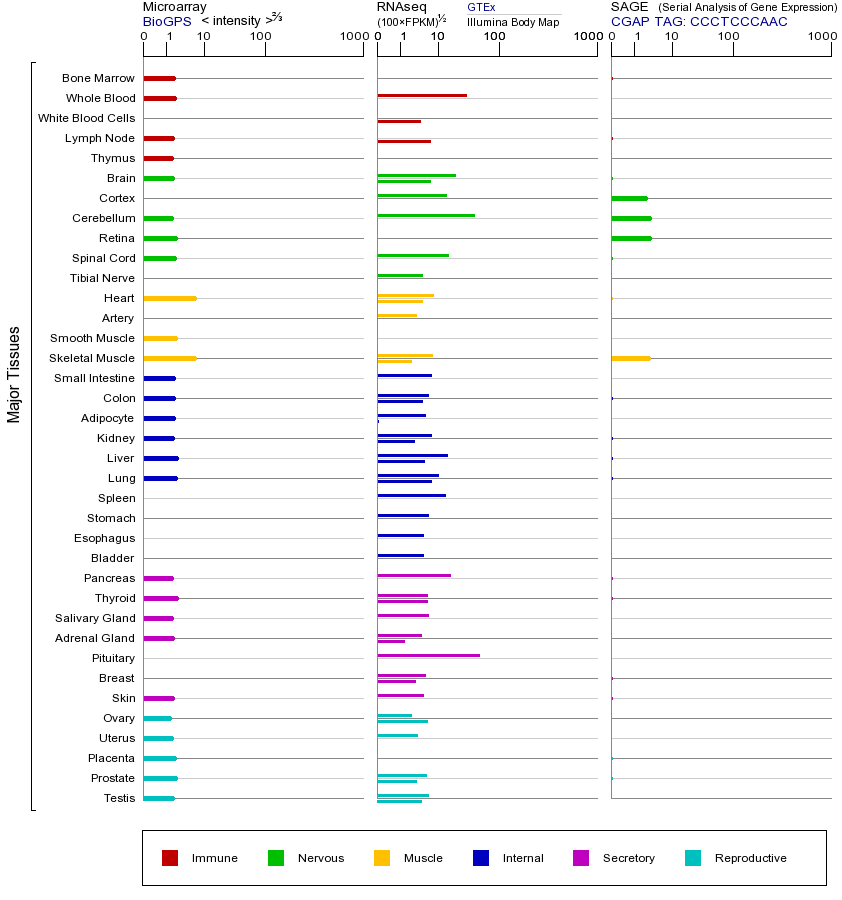CLDN9 (claudin 9)
- symbol:
- CLDN9
- locus group:
- protein-coding gene
- location:
- 16p13.3
- gene_family:
- Claudins
- alias symbol:
- None
- alias name:
- None
- entrez id:
- 9080
- ensembl gene id:
- ENSG00000213937
- ucsc gene id:
- uc010uwo.1
- refseq accession:
- NM_020982
- hgnc_id:
- HGNC:2051
- approved reserved:
- 1998-07-23
CLDN9(Claudin-9)是紧密连接蛋白家族(Claudin家族)的成员之一,该家族由至少27个成员组成,主要功能是形成细胞间的紧密连接结构,维持上皮和内皮细胞的屏障功能,调控细胞旁通透性和离子选择性。CLDN9在多种组织中表达,包括内耳、肾脏、肝脏和睾丸等,尤其在耳蜗中高表达,对维持内耳淋巴液离子平衡和听觉功能至关重要。CLDN9通过与其他Claudin蛋白(如CLDN6、CLDN14)相互作用形成紧密连接链,选择性调控阳离子(如K⁺)的跨细胞旁转运。CLDN9基因突变可能导致听力损失,因为其功能异常会破坏内耳淋巴液的离子梯度,影响毛细胞信号传导。研究发现CLDN9表达下调与感音神经性耳聋相关,而过表达可能增强上皮屏障功能但可能干扰其他Claudin蛋白(如CLDN14)的离子选择性。在癌症中,CLDN9的表达异常(如胃癌中低表达、卵巢癌中高表达)可能与肿瘤转移和预后相关,其机制可能涉及细胞粘附性和信号通路改变。Claudin家族共性包括:均具有4个跨膜结构域、N端和C端位于胞内,通过PDZ结构域与支架蛋白(如ZO-1)结合,共同维持细胞极性及屏障完整性。CLDN9的调控异常还可能影响邻近基因(如TJP1)的表达或功能,进而影响整体紧密连接复合物的稳定性。
This gene encodes a member of the claudin family. Claudins are integral membrane proteins and components of tight junction strands. Tight junction strands serve as a physical barrier to prevent solutes and water from passing freely through the paracellular space between epithelial or endothelial cell sheets, and also play critical roles in maintaining cell polarity and signal transductions. This protein is one of the entry cofactors for hepatitis C virus. Mouse studies revealed that this gene is required for the preservation of sensory cells in the hearing organ and the gene deficiency is associated with deafness. [provided by RefSeq, Jun 2010]
该基因编码的紧密连接蛋白家族的一个成员。 Claudins是整合膜蛋白和紧密连接链的组分。紧密连接绳股用作物理屏障,以防止溶质和水自由通过上皮或内皮细胞片之间的细胞旁空间,并且还维持细胞极性和信号转导中发挥关键作用。这种蛋白质是入门辅因子为丙型肝炎病毒之一。小鼠的研究显示,该基因是必需的感觉细胞中的听觉器官保存和基因缺乏与耳聋相关联。 [由RefSeq的,2010年6月提供]
基因本体信息
CLDN9基因(以及对应的蛋白质)的细胞分布位置:
- 质膜
- 细胞质
- 细胞外
- 高尔基体
- 囊泡
- 细胞骨架
- 内质网
- 细胞核
- 内体
- 溶酶体
- 线粒体
CLDN9基因的本体(GO)信息:
| 名称 |
|---|
| 4514 Cell adhesion molecules (CAMs) [PATH:hsa04514] |
| 4530 Tight junction [PATH:hsa04530] |
| 4670 Leukocyte transendothelial migration [PATH:hsa04670] |
| 5160 Hepatitis C [PATH:hsa05160] |
| 名称 |
|---|
| Cell junction organization |
| Cell-Cell communication |
| Cell-cell junction organization |
| Tight junction interactions |
联系方式
山东省济南市章丘区文博路2号 齐鲁师范学院 genelibs生信实验室
山东省济南市高新区舜华路750号大学科技园北区F座4单元2楼
电话: 0531-88819269
E-mail: product@genelibs.com
微信公众号
关注微信订阅号,实时查看信息,关注医学生物学动态。







